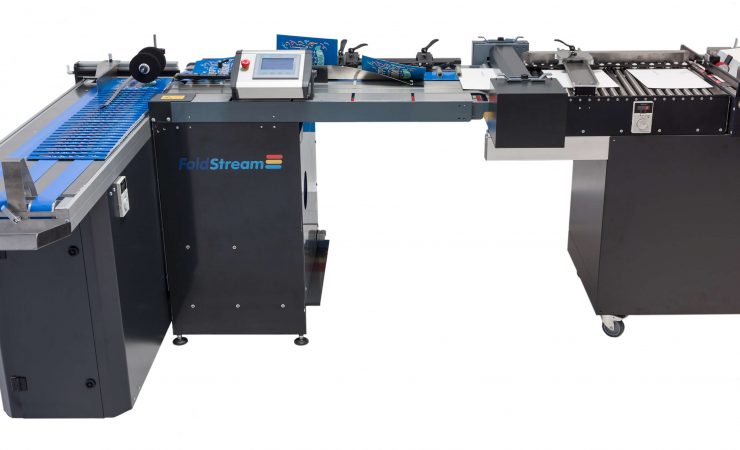A crease-and-fold system capable of handling 10,000 items an hour without cracking, marking or otherwise damaging digital print has been introduced by CreaseStream and ProCut.
The FoldStream system handles sheets from 10 to 48cm wide (big enough for SRA3) and weights up to 400gsm or more in some cases. It uses the rotary creasing technology developed by Tech-ni-Fold, which avoids damage to toner print by pre-compressing the sheet on both sides simultaneously, creating a U-shaped groove, in conjunction with a soft plough folder from German company ProCut.
Tech-ni-fold/CreaseStream founder Graham Harris explained that this approach produces better quality results than plate or buckle-folding, which can lead to curl on heavier stocks, while the continuous creasing allows for higher speed than knife-and-matrix alternatives that have to stop for each fold impression. The FoldStream is designed such that the crease and the plough fold are always inline.
The paper handling system uses belts to advance sheets in and folded products out, avoiding marking to surfaces of digital print. The input tray can accommodate up to a 15cm stack of sheets, allowing for topping-up during operation; re-setting the input feed, side-lay and crease position/pressure to switch jobs is done manually but is said to take between 40 seconds and one minute. A batch counter helps in managing quantities for packing and production tracking purposes.
Applications principally centre on the greetings card market, which has remained buoyant during – and perhaps because of – lockdown, reaching some 1.7 billion items annually in the UK, according to Mr Harris, but also extend to any single-crease single-fold item and potentially to folding cartons too. Options such as additional ploughs, a gluing system (hot melt or PUR), tape applicator, rotary trimming and micro-perforating, are possible.
Further options may include the ability to link the system inline to digital presses, though expansion to larger formats such as B2 is unlikely, as ProCut director Dirk Stunkel pointed out that there are many competing products in that sector and that the majority of digital print is up to 520–530mm width.


